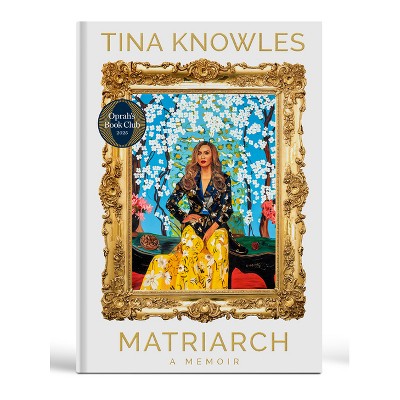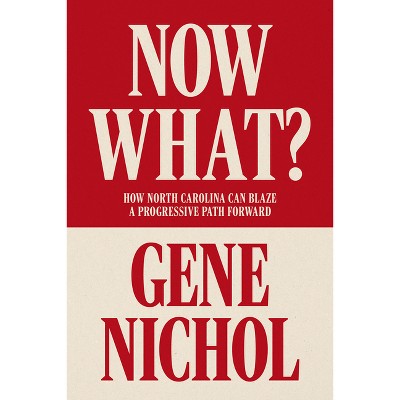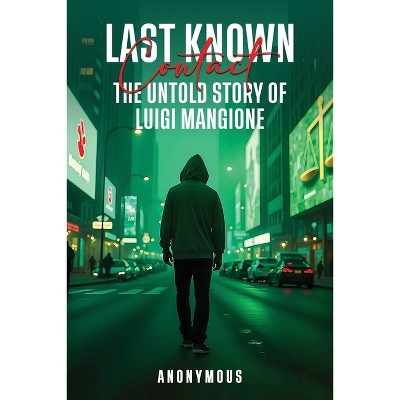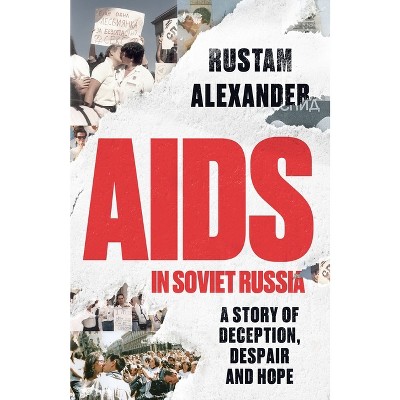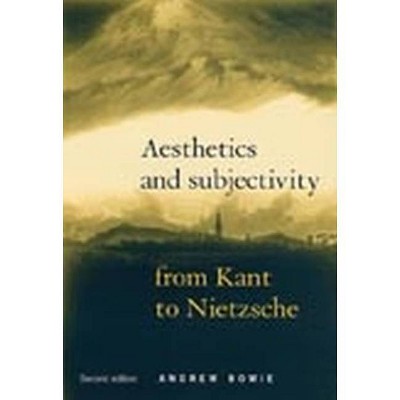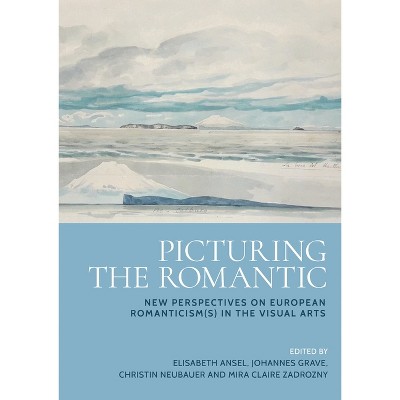Sponsored

Soviet Materialities - by Mollie Arbuthnot & Christianna Bonin & Gabriella Ferrari (Hardcover)
Pre-order
Sponsored
About this item
Highlights
- Soviet materialities rethinks Soviet history and culture through the lens of materiality, exploring how humans and objects co-shaped identity, ideology, and social life.
- About the Author: Mollie Arbuthnot is Assistant Professor of History at Nazarbayev UniversityChristianna Bonin is Assistant Professor of Art History and Theory at American University of SharjahGabriella A. Ferrari is an independent scholar of Russian and Soviet visual culture
- 376 Pages
- History, Russia & the Former Soviet Union
Description
About the Book
Soviet materialities rethinks Soviet history and culture through the lens of materiality, exploring how humans and objects co-shaped identity, ideology, and social life. This interdisciplinary volume bridges Soviet-era thought with theoretical insights from New Materialism, offering a groundbreaking approach to the study of the Soviet past.Book Synopsis
Soviet materialities rethinks Soviet history and culture through the lens of materiality, exploring how humans and objects co-shaped identity, ideology, and social life. This interdisciplinary volume bridges Soviet-era thought with theoretical insights from New Materialism, offering a groundbreaking approach to the study of the Soviet past.From the Back Cover
'This important volume forcefully demonstrates the value of taking the mutually-constitutive relationship between humans and objects seriously... a lodestar for future research.'
--Antony Kalashnikov, University of Waterloo
--Emma Widdis, University of Cambridge 'Soviet materialities is much more than an indispensable resource ... The essays anthologized here reveal a wholly revitalized sphere of inquiry into the creative and lived experiences that shaped the former Soviet space. An extraordinary feat.'
--Jane A. Sharp, Rutgers University How did matter matter in the Soviet world? Soviet materialities rethinks the relationship between humans, things, and environments in the Soviet Union, moving beyond a simple study of objects made in the USSR to explore how materials shaped social life, ideology, and identity. It calls for a fresh approach to materiality, one that recognises the mutual formation of people and their material surroundings under Soviet socialism. Bringing together a selection of original and interdisciplinary scholarship, its case studies range from the Turksib railway built across the Kazakh steppe to a collection of pickled brains, from the literal and metaphorical explosions of gelatine printing to an atheist museum built in a Sufi shrine in Uzbekistan, and from heirloom jewellery sold for survival during famine in Ukraine to the experimental performances of Conceptualist artists. Drawing on affect theory, environmental history, the history of the everyday--and the theoretical interventions of New Materialism more broadly--Soviet materialities uncovers how distinct ways of understanding and conceptualising matter emerged in the ideological and historical contexts of the Soviet Union. Bridging history, literature, anthropology, art history and environmental humanities, this book argues that materiality offers a groundbreaking methodological toolkit for rethinking the Soviet past through material relations.
Review Quotes
'This important volume traces the many ways in which materiality shaped Soviet subjectivities, structured social meaning, and conditioned historical processes. In so doing, the collection forcefully demonstrates the value of taking the mutually-constitutive relationship between humans and objects seriously. Indeed, the individual contributions show this approach to be especially productive at the newest frontiers of Soviet studies, especially histories of emotions, time and memory studies, and sensory and corporeal histories. Provocatively, the book also suggests that the Soviet Union's own schools of materialist thought might retain contemporary relevance as an alternative tradition of thinking about materiality. A major contribution in its own right, Soviet materialities is also a lodestar for future research.'
--Antony Kalashnikov, University of Waterloo, editor of Time and Material Culture: Rethinking Soviet Temporalities and author of Monuments for Posterity: Self-Commemoration and the Stalinist Culture of Time
--Emma Widdis, University of Cambridge, Professor of Slavonic Studies, Author of Socialist Senses: Film, Feeling, and the Soviet Subject 'Soviet materialities is much more than an indispensable resource for those seeking new research informed by recent writing on material culture in an area where such theories were foreshadowed (and subsequently overlooked). The essays anthologized here reveal a wholly revitalized sphere of inquiry into the creative and lived experiences that shaped the former Soviet space. They span a remarkable range of approaches, periods, and, indeed, materialities, all stemming from the proposition that a renewed focus on the particularities of human engagement with the material world (whether artistic, domestic, or sacred) is urgently needed in our own time. Authored by a diverse group of scholars, some established, many newly published in literary, anthropological, and art historical disciplines, these texts accomplish an extraordinary feat given the challenges of original research we all encounter; they should succeed in conveying the vibrancy of our field to readers in many disciplines, and appeal as well to those for whom the strange may now become both more compelling and familiar.'
--Jane A. Sharp, Rutgers University, Research Curator, Norton and Nancy Dodge Collection of Nonconformist Art from the Soviet Union at the Zimmerli Museum, author of Russian Modernism between East and West: Natal'ia Goncharova and the Moscow Avant-Garde, 1905-14
'This important volume traces the many ways in which materiality shaped Soviet subjectivities, structured social meaning, and conditioned historical processes. In so doing, the collection forcefully demonstrates the value of taking the mutually-constitutive relationship between humans and objects seriously. Indeed, the individual contributions show this approach to be especially productive at the newest frontiers of Soviet studies, especially histories of emotions, time and memory studies, and sensory and corporeal histories. Provocatively, the book also suggests that the Soviet Union's own schools of materialist thought might retain contemporary relevance as an alternative tradition of thinking about materiality. A major contribution in its own right, Soviet materialities is also a lodestar for future research.'
-Antony Kalashnikov, University of Waterloo, editor of Time and Material Culture: Rethinking Soviet Temporalities and author of Monuments for Posterity: Self-Commemoration and the Stalinist Culture of Time
-Emma Widdis, University of Cambridge, Professor of Slavonic Studies, Author of Socialist Senses: Film, Feeling, and the Soviet Subject 'Soviet materialities is much more than an indispensable resource for those seeking new research informed by recent writing on material culture in an area where such theories were foreshadowed (and subsequently overlooked). The essays anthologized here reveal a wholly revitalized sphere of inquiry into the creative and lived experiences that shaped the former Soviet space. They span a remarkable range of approaches, periods, and, indeed, materialities, all stemming from the proposition that a renewed focus on the particularities of human engagement with the material world (whether artistic, domestic, or sacred) is urgently needed in our own time. Authored by a diverse group of scholars, some established, many newly published in literary, anthropological, and art historical disciplines, these texts accomplish an extraordinary feat given the challenges of original research we all encounter; they should succeed in conveying the vibrancy of our field to readers in many disciplines, and appeal as well to those for whom the strange may now become both more compelling and familiar.'
-Jane A. Sharp, Rutgers University, Research Curator, Norton and Nancy Dodge Collection of Nonconformist Art from the Soviet Union at the Zimmerli Museum, author of Russian Modernism between East and West: Natal'ia Goncharova and the Moscow Avant-Garde, 1905-14
About the Author
Mollie Arbuthnot is Assistant Professor of History at Nazarbayev University
Christianna Bonin is Assistant Professor of Art History and Theory at American University of Sharjah
Gabriella A. Ferrari is an independent scholar of Russian and Soviet visual culture
Shipping details
Return details
Frequently bought together

